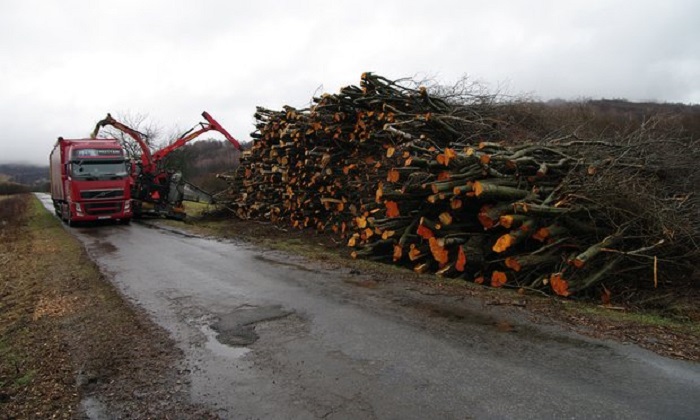Bioenergy fuel is supposed to be harvested from residue such as forest waste but, under current legislation, European bioenergy plants do not have to produce evidence that their wood products have been sustainably sourced.
Birdlife found logging taking place in conservation zones such as Poloniny national park in eastern Slovakia and in Italian riverside forests around Emilia-Romagna, where it said it had been falsely presented as flood-risk mitigation.
In Slovakia, the drive to reach the EU’s renewable energy targets has seen a 72% increase in the use of wood for bioenergy since 2007, according to Birdlife’s Black Book of Bioenergy paper.
Sini Eräjää, Birdlife’s bioenergy officer, said: “This report provides clear evidence that the EU’s renewable energy policies have led to increased harvesting of whole trees and to continued use of food crops for energy. We are subsidising large-scale environmental destruction, not just outside Europe, as in Indonesia or the US, but also right in our own backyard.”
The logging of whole trees releases all of their stored carbon and drains the planet’s “carbon sink” or potential for absorbing more emissions. Even if new saplings are planted, it may take 50 years or more until they are able to compensate for felled trees, by which point experts fear tipping points for runaway warming could have been reached.
The continent’s carbon sink is forecast by the EU to decline by about 100m tonnes between 2020 and 2030, partly because of logging for bioenergy.
An EU source told the Guardian that industrial-scale demand from large power plants was a key contributor to the felling of forests for bioenergy.
“It is increasingly a problem, and it comes with scale,” the source said. “The bigger the [power plant] facility, the more you need economies of scale but you can’t easily achieve those with residues.
“If you go to a forest system where 30% [of biomatter] is residue, you can collect it [without problems]. But if your demand exceeds that, there is just nothing else to do. You have to cut more forests. It is as simple as that.”
The dynamic extends to forests beyond the EU’s borders, with unsustainably harvested wood imports increasingly being sucked in to meet European demand.
One massive wood plant in Vyborg, north-west Russia produces 800,000 tonnes of wood pellets each year from felled trees in forests around Leningrad and Pakov oblasts. Its wood products are sold to companies including RWE, Vattenfall, Fortum and Dong Energy to meet demand in Denmark, Italy, Finland and Sweden.
Colombia, the world’s fourth-biggest palm oil producer, has doubled its number of palm oil plantations in less than a decade, while tripling exports to Europe. Half a million hectares of the country’s forest land – including former tropical rainforest areas – have been cleared for agricultural exploitation since 2006.
Jori Sihvonen, the biofuels officer at Transport and Environment, which co-authored the report, said: “It is easy to fall into thinking that all bioenergy is sustainable, but time and again we see some forms of it can be worse for society, the natural environment and, in the case of burning land-based biofuels or whole trees, even the climate.
“The European commission should phase out all land-based biofuels by 2030 and devote greater efforts to promoting sustainable renewables such as solar, wind, geothermal and tidal.”
/TheGuardian/
More about:










-1745485667.jpg&h=190&w=280&zc=1&q=100)





































